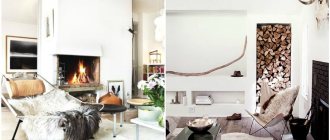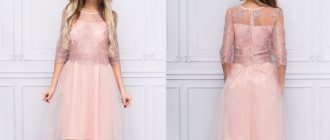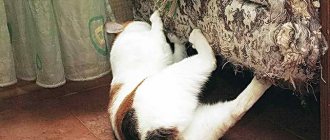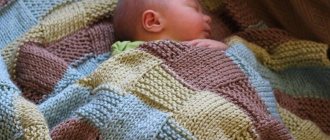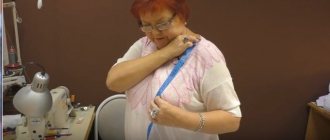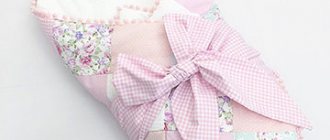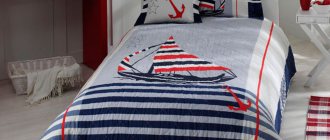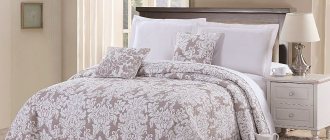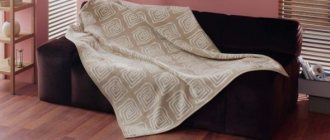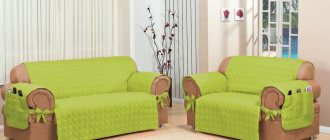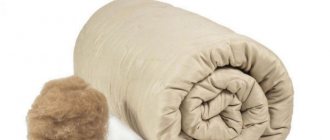It is impossible to imagine a modern, cozy home without a single blanket. For centuries, this warm and durable cape made of tartan wool served the Scottish Highlanders as clothing, a bed, a raincoat, a portable cradle for babies, and also replaced many other household items.
Today, a plaid may be completely different from its homespun ancestor, but in any case it remains just as warm, functional and practical. We invite you to immerse yourself in the soft and cozy world of blankets in order to consciously choose a model whose qualities will ideally suit your needs.
Types of blankets
Depending on the material, there are three types of products:
- natural (wool, cotton, fur, down);
- artificial (acrylic, microfiber, polyester, faux fur, fleece);
- mixed (natural with the addition of artificial ones or vice versa).
According to the size chart, the following are distinguished:
- adults;
- teenage;
- children's.
According to the method of making blankets there are:
- knitted;
- woven;
- sewn from a single piece of material;
- patchwork.
Choosing a style
Stylistic orientation is determined based on the following rules:
- The classic interior is complemented with woolen, plain textiles.
- For the Scandinavian style, models with large braids and fur inserts are recommended.
- For boho or country, choose bold accessories with tassels, fringes, chunky, chunky knits or abstract prints.
- Complement the ethnic direction with checkered, fur, mohair blankets.
By and large, the style of the cape is important only when you want to achieve a perfect match of all the details in the interior, a combination of materials, if you are using a blanket as a bedspread. In other cases, just follow your preferences.
Pros and cons of blankets
Material
The most important selection criterion is the material of manufacture.
Acrylic blankets
The material is similar to natural wool. The fabric is soft, lightweight, made from synthetic fibers.
Pros:
- retains heat-insulating properties and attractive appearance for a long time;
- unpretentious care, machine washable;
- hypoallergenic, suitable for people with hypersensitivity and children;
- no static electricity;
- durability of the original color due to color fastness;
- low price;
- impressive assortment.
Minuses:
- air is retained;
- foreign odors are absorbed;
- tendency to form pellets;
- loses softness from bright light;
- It absorbs greasy stains well that are difficult to remove.
Microfiber blankets
New generation synthetic fabric consisting of polyamide or polyester. A special feature is the thickness of the thread, which is an interwoven fiber with a thickness of 1 Dan.
Pros:
- easy care (regular washing is allowed);
- durable, wear-resistant fabric;
- the color lasts a long time;
- no pellets are formed;
- absorbs moisture well, but dries quickly.
Minuses:
- a static charge is formed;
- The product cannot be ironed or dried at high temperatures (for example, on a radiator).
Microfiber blankets are used as bedspreads or blankets as they are very warm.
Polyester blankets
The fabric consists of polyester fibers. The appearance depends on the shape of the fiber and its processing.
Pros:
- pleasant to the touch;
- products are durable, resistant to stretching and friction;
- light weight;
- easy and simple to wash, dries quickly, does not wrinkle;
- low price;
- does not absorb odors.
Minuses:
- electrified;
- at elevated temperatures it changes shape (shrinks).
Faux fur blankets
The base is a primed fabric onto which synthetic pile is attached. Popular due to its thermal insulation qualities and low cost.
Pros:
- durable and wear-resistant;
- moisture resistant;
- large selection of colors;
- retains heat well;
- not of interest to moths;
- Easy to clean, washing machine can be used.
Minuses:
- produces static electricity;
- prone to the formation of pellets;
- attracts dust.
Fleece blankets
Pros:
- resistant to mechanical influence and high temperatures;
- does not fade in the sun;
- absence of allergic reactions;
- resistance to mechanical stress;
- very easy care (does not wrinkle, washes perfectly);
- may be dry cleaned or ironed;
- moths and mold do not grow;
- light weight.
Minuses:
- Over time, static tension accumulates, which is eliminated by rinsing with an antistatic agent.
Cotton blankets
Natural material of plant origin.
Pros:
- environmentally friendly;
- a light weight;
- soft, pleasant to the body;
- the appearance is preserved after a large number of washes;
- hypoallergenic.
Minuses:
- wrinkles easily;
- takes a long time to dry;
- does not retain sufficient heat, more suitable for cool summers.
Wool blankets
Wool products are distinguished by their beauty, warmth, and health benefits.
Pros:
- medicinal properties for diseases of the musculoskeletal system, colds;
- blood circulation is activated;
- moisture is absorbed well, but the blanket remains dry;
- rarely washed due to wool’s unique self-cleaning ability;
- long service life;
- pleasant to the body.
Minuses:
- cause an allergic reaction;
- some models are prickly;
- high price;
- limited range of colors.
The composition of natural products is cashmere, camel, sheep wool.
Camel wool blankets
The material has amazing properties. It protects from cold, saves from heat and humidity.
Pros:
- the amount of absorbed moisture is equal to 30% of the total weight of the product, while maintaining dryness;
- has a beneficial effect in the treatment of arthritis, arthrosis, radiculitis, colds;
- The wax contained in the composition creates softness and has a positive effect on the skin, absorbing into it. Lanolin (wax) is preserved after numerous washes;
- antistatic material;
- does not electrify, relieves static voltage, which is especially important in a house with electronics and plastic;
- light, warm;
- durable (average service life - 9 years).
Minuses:
- Mite waste products cause allergies. Regular cleaning will help get rid of them;
- hairs tingle a person's skin - this is useful, but unpleasant.
Blanket sizes
The size determines the purpose of the product:
- Large: 180×220, 200×200, 200×220, 220×240, 240×260 cm - options for double beds, large sofas;
- 170x240 cm is suitable for a small sofa;
- 130x170, 140x200, 150x200 cm - chair options.
Children's blankets:
- 75x75, 75x90 cm - for newborns;
- 100×120, 110×140 cm – for small children;
- 130×160, 140×205 cm – for primary school age.
Make sure that the blanket covers the sides of the furniture, but does not touch the floor. A comfortable overhang length is 20 cm on one side.
Blanket shape
Common shapes are rectangular and square models. Children's products often have rounded corners. Each manufacturer has original versions. Some companies make any shapes to order.
Equipment
There are models that come complete with bed linen. This allows you not to disturb the design of the bedroom and create an overall composition.
Children's models are sometimes complemented by a soft toy that matches the blanket in color or pattern.
Choosing a size
To choose the right size, proceed from the following parameters:
- Blankets 75x100 cm and 80x110 cm are suitable for newborns. The larger the fabric, the easier the child will get entangled in it.
- For children of primary preschool age, medium-sized models of 170x200 cm are needed. They are convenient for self-refueling.
To select an accessory for standard furniture in the bedroom and living room, proceed from the following indicators:
| Purpose | Size, cm |
| for armchair | 130x170 |
| for single bed 80x210 cm/70x200 cm | 220x240 |
| for double bed 160x210 cm | 240x260 |
Typically, covers hang from two or three sides of the bed. Decide how far the sides of the blanket should reach the floor. Measure the dimensions of the sides and the height of the bed base.
If the bed has two sides, then focus on the length of the sleeping bed so that the cover is enough to cover the entire surface and you don’t have to tuck it.
If you plan to simply cover yourself during sleep and rest, then purchase a 140x200 cm blanket, which is also suitable for draping over your shoulders.
For a small sofa it is worth buying a blanket 200x220 cm, for corner modifications - 240x260 cm.
Flaws
- Wearability. Since the product does not have a duvet cover, the appearance becomes worse with constant use. Scuffs appear, the color changes, especially on the side where it sits, if it is used as a bedspread. And if they are wrapped and covered with it, the color of the material changes from the inside. At the same time, the operational properties are preserved.
- Dust. Since almost any blanket consists of fibers of various lengths, the products collect dust very well. Therefore, regular cleaning is necessary.
- Allergens. We are talking about natural materials. Animal fur sometimes causes allergic reactions, but artificial fabrics are hypoallergenic.
- High price. The most expensive models will be natural bedspreads.
- A common problem with blankets is the formation of static electricity.
Purpose
Blankets were first used in Scotland. People who use soft pieces of fabric for utilitarian purposes had no idea that pretty soon the accessory would gain popularity all over the world.
Soft bedspreads today can be bought in almost all stores, as well as in their online versions. The main purpose is to create a comfortable, warm environment for a person. It is convenient to wrap yourself in a blanket on a frosty evening when there is wind and snowstorm outside.
Bedspreads can be used for decorative purposes. Buyers are often in search of a soft blanket for a bed, blankets for an armchair, or a sofa. Models with patterns and images suitable for different interiors are popular.
Before buying an item, it is worth remembering three types of capes:
- Made from natural fabrics (for example, wool).
- Combined - a mixture of natural and artificial materials.
- Purely synthetic products.
The latter should be purchased as a last resort, regardless of the variety of colors and models. The maximum they can be used for in the future is room decor.
How to choose a blanket
To choose a suitable blanket, determine for what purpose you need it:
- If it will cover a sofa or bed, you should be guided by the criteria of size and composition. The material for a sofa where people will constantly sit, for example, in front of the TV, should be easy to wash. Also be wear-resistant so that there are no marks.
- If you need a blanket for cool summer days, it is better to give preference to cotton. For greater warmth, natural or artificial wool is suitable. Pay attention to the thickness of the bedspread.
- To choose the best product, pay attention to the condition of the folds. If the pile is matted or completely worn out, such a blanket will not last long.
- Pay attention to the finish. The edge is stitched, folded, and treated with ribbon, braid or fringe. The stitching should be smooth, without elongated loops or threads.
- Consider the pattern so that it is symmetrical, without dropped loops.
- Examine the surface - the texture should be smooth, even, uniform.
What else should you pay attention to when choosing?
The main advice when buying is to give preference to high-quality items without foreign odors, with even stitches without protruding threads.
Be sure to run your palm over the surface - your hand should remain clean - free of paint and lint.
The design of a quality product without defects, missing colors or loops, is completely symmetrical, and the texture is uniform over the entire surface.
- For summer days, you need cotton ones, as well as models made of artificial wool; buy wool blankets for the winter-autumn season.
- For daily use, for example, when watching TV, acrylic capes are preferred - they are easy to wash and dry in a couple of hours.
- The thicker the blanket, the heavier it is, so for travel, choose thin fabrics with a compact fold.
Care
The care requirements for different materials differ. The washing conditions for each model are indicated on the label.
Regularly clean the blanket from dust using a clothes brush. Wash cotton items using an automatic machine. After washing, do not wring out the bedspread so that it retains its shape. It is better to dry it horizontally to preserve the structure.
Wool models are washed exclusively by hand. The water is cool, mild detergents are used. You can’t unscrew it, let the water drain on its own. Dry on a flat surface. Camel wool loves airing in the warm season and snow baths in winter. Do not wash using detergents. To clean, just shake the blanket.
Products should be stored in a cardboard box or simply rolled up. Should not be wrapped in plastic wrap.
Faux fur
| pros | Minuses |
| strength | electrified |
| wear resistance | pellets are formed |
| moisture resistance | attracts dust |
| retains heat well | |
| antibacterial | |
| simple wash |
Guarantee
There are two reasons for returning a purchased blanket:
- The product turned out to be of inadequate quality, a manufacturing defect was discovered, it fell apart, broke through, or deteriorated through no fault of yours.
- The product did not match in color, dimensions, size, or design.
Typically the warranty is issued for 7 days. If you wish to exchange or return an item, this can be done within 2 weeks from the date of purchase, provided you have the packaging, label and receipt. The blanket must retain its presentation.
No warranty is provided if the product:
- damaged due to unforeseen situations - natural disasters, fire, everyday occurrences;
- damaged due to improper handling, storage, transportation;
- dirty.
Tips for making your own bedspreads
Non-standard beds require an individual approach to sewing blankets to order or independently. A patchwork bedspread, which hides many imperfections in use and minor stains, is in demand where there are many visitors in the house, or where there are small children or pets. Quilted fabric for the bedspread can be prepared independently or purchased ready-made.
Patchwork bedspread
A creative outlook on the world helps you make your own quilts from bedspread fabric of any texture. You can use thin synthetic padding as a filler, and the frills can be made of organza or satin. The creative imagination of needlework is limitless.
Fashion trends have brought knitted merino blankets into use. Soft threads made from the highest class sheep's down are suitable for allergy sufferers, small children and comfort-loving household members. Merino wool has a positive healing effect on sore joints, and it also normalizes blood pressure.
Bedspread in a children's room
Bedspreads made from upholstered furniture fabric are also appearing on the market due to the wide variety of materials offered in terms of structure and types.
Blanket manufacturers
Tango
Chinese brand. Quite popular, as the blankets stand out for their appearance and quality. The products are made from modern materials, so they do not cause allergic reactions and are suitable for small children.
They absorb moisture but dry quickly. Weight is usually light. The colors are bright, saturated, and remain that way for a long time.
Tango blankets are distinguished by a wide range of design solutions. The products are distinguished by the traditional high quality of tailoring, safety of the composition and dye for people, and highly artistic design.
Paters
A company that combines classics and modern trends in textile fashion.
A popular manufacturing material is natural yarn (pure New Zealand wool). It is distinguished by thin hairs that trap large amounts of air. Acrylic models are recognized as the most functional products, characterized by softness and lightness. They are very popular due to their affordable price.
Children's collections have a lot of advantages: lightweight, hypoallergenic, breathable, and retain heat.
Caring for New Zealand wool requires gentle hand washing using a mild detergent.
Website of company representatives: https://pled-spb.ru/catalog/pledy/
Arya
Well-known Turkish company. Manufacturers combine oriental style and European quality.
The product has an excellent composition and high-quality painting.
Models are made from microfiber, fleece, calico, faux fur, polyester. The appearance of the products is represented by checkered, monochromatic, multi-colored, pronounced zigzag patterns, images of animals or flowers.
The embossing effect, beautiful piping, imitation leopard skin, oriental patterns, marine themes, and city images represent the variety of products.
Children's products consist of microfiber on one side, polyester on the other. Used as a crib cover or a light blanket.
A wide selection is presented on the website: https://www.aryahome.ru/
Biederlack
A German company engaged in the production of blankets from various materials:
- delicate cashmere;
- warm sheep's wool;
- light cotton;
- hydroscopic acrylic, polyacrylic;
- Durable polyester, microfizer.
Blankets made from natural or artificial materials have a wonderful design.
The company produces products in sizes from 130x170 to 220x240 cm.
Artificial fiber makes it possible to produce bedspreads in a wide variety of colors. After numerous washes, the original appearance remains. They have hypoallergenic properties, allow air to circulate freely and provide excellent warmth.
Kazanova
Kazanova brand are considered the standard of quality, as they contain innovative materials (acrylic, polyester) with the addition of natural fibers. The products are equipped with supersoft material, which ensures durability. It looks like velor with long pile.
Blankets do not attract dust and dirt and do not cause allergic reactions. The color is stable even in direct sunlight. The bedspreads are warm, soft, light. Artificial materials are similar in their characteristics to natural wool.
Le Vele
Le Vele brand represents a huge range of high-quality original products.
Blankets are made using modern technologies. They meet global standards of convenience and safety. Strong, durable, various colors, unusual texture. Comfortable, high quality, natural.
All products are certified and environmentally friendly.
Favorite home
Fleece is characterized by strength and wear resistance. This is a soft, pleasant material that retains heat and allows air to pass through. The blanket holds its shape and is not susceptible to pilling, as it is treated with a special anti-pilling compound. Traditional flower patterns, geometric and abstract shapes, and classic checks will help create coziness in your home.
Fleece blankets are especially popular because they are versatile. Used as a travel blanket, a warm cape for relaxing in the garden or at home.
Pantex
Russian brand, famous for the production of cotton blankets. Acrylic is added for fluffiness and softness.
Products are manufactured in three sizes: 200×220, 180×220, 150×200. By choosing the right size, you will complement your interior with classic or travel models, large bedspreads on bedroom furniture. Quality certificates are provided on the site.
In addition to the classic series, the company has created special lines. “Elite” stands out for its high-density products and the use of cutting technology. The drawing becomes textured and voluminous.
Large selection of children's blankets. Bright cheerful colors, high-quality, environmentally friendly raw materials. Pleasant to the touch, soft for delicate baby skin thanks to high quality. The sizes of children's models are 90x120, 100x0140.
Instead of output
A blanket is a thing that can make a home a home and an evening unforgettable. To choose the right thing, it’s not enough just to understand how much you need to allocate for its purchase. It is important to consider:
- Purpose.
- Suitable material.
- Color.
- Size.
- Availability of decor.
Some try to choose among the most famous brands in this area - many highlight Paters, Arya, Tango, Kazanova, Biederlack, Pantex, Runo, Le Vele, Lyubimy Dom and many, many others.
We hope that the material in the article will help you choose a good blanket. If you have your own useful tips on the topic, then share them with our readers in the comments! We will be glad to hear your opinion.
The article was written for the site.
Tags:Sofa, Bed
Synthetics
Synthetic blankets are distinguished by their affordability, pleasant sensations when touched, and fairly high wear resistance. Such materials do not provoke an allergic reaction and retain their original visual characteristics for a long time.
To find out how to choose the right blanket, you need to consider the main positive and negative aspects of the products offered on the market. The main advantages of synthetic blankets include:
- Pleasant visual qualities;
- Affordable price;
- Synthetics do not require special care;
- Pleasant tactile sensations;
- The material is hypoallergenic.
Let's list the disadvantages:
- A synthetic blanket can become electrified.
- The material does not breathe well and does not allow air to circulate normally.
If you properly care for blankets, any product will last a long time.
Pashmin
Pashmina is a type of cashmere that is great for making rugs or blankets. The finest goat underhair, silk or cotton is used to make pashmina. This is a relatively expensive material, characterized by lightness, elasticity, shine and warmth.
Advantages:
- The material breathes well, weighs little, and retains heat.
- Wear-resistant.
Flaws:
- Requires careful care.
- Pashmina is considered a very expensive material.
Modern products are made from 60% pashmina, 20% silk, 20% cotton.
Cotton
Cotton items are pleasant to touch, soft and lightweight, and can withstand many wash cycles. Cotton blankets do not provoke an allergic reaction in people, but they warm well and are great for use in cool weather. Sheep wool is relatively cheap and produces a large amount of heat. Camel undercoat is quite expensive, but lightweight; cashmere is soft, but with frequent use it quickly becomes unusable.
Fur looks beautiful, but it is a rather difficult to care for, expensive, massive material.
Microfiber
This material is based on polyamide and polyester. The thin thread is considered the main distinguishing feature of microfiber.
Advantages:
- Easy to wash;
- Microfiber does not fade;
- No lint collects on the surface of the material;
- Moisture does not collect in the inner part of the fibers, is removed from the surface without much difficulty, and easily seeps through the product. This feature ensures microfiber dries quickly.
It is not recommended to iron a microfiber blanket or dry it on a radiator. Microfiber fabrics are not sufficiently resistant to high temperatures.
Cashmere
The material is created from goat hair, in which the thickness of the hairs is 3 times less than that of human hair.
The advantages of the material include:
- Good thermal insulation;
- Cashmere products are warmer than regular sheep's wool;
- Fluffy and soft material will become silky after a certain time.
Flaws:
- Care for cashmere should be close. Blankets can only be washed by hand in warm water.
- The cost of products starts from 10,000 rubles.
Woolen blankets are endowed with special healing properties. Doctors recommend using such products for patients diagnosed with radiculitis, arthritis, rheumatism or arthrosis. A woolen blanket will help normalize blood pressure and get rid of headaches.
Colors
The main condition when buying a fluffy blanket is that its tone does not go against the color scheme in the interior of the room.
Products in noble shades are always relevant. Stores sell bedspreads in pastel white, beige shades, and the exquisite color of baked milk. They will fit well into almost any interior. Preference should be given to monotony.
Light fluffy blankets are good both in combination with the classic design of the room and with elements of the Art Nouveau style.
Capes in shades with a combination of beige and brown are winning. Coffee with milk, camel, champagne, light green and olive tones go well with everything.
Products of peach, pale pink, - blue, - lilac, - green will bring tenderness into the atmosphere of the room.
For those who prefer a bright design, adding one eye-catching accent, there are red, red, and purple shades.
A stylish solution is to buy a fluffy blanket in noble gray tones. You should be careful with black options: they are only good for a monochrome interior.
You should temporarily move away from the variety of prints, animal colors, and tacky appliqués. Plain textiles will add nobility to the interior. It’s better to play with a combination of textures.
Fleece
High-quality thermal insulation is provided by so-called fleece blankets. The basis of fleece fabric is polyester, but the tactile sensations of the material are similar to natural wool. A fleece blanket is relatively more expensive than an acrylic product, but this material allows air to pass through better and absorbs moisture. These blankets can be used as an extra blanket on cold evenings.
Fleece blanket is considered a good alternative to natural fabrics. This material is created from polyester, endowed with the following positive qualities:
- Resistance to various mechanical and temperature influences;
- The colors do not fade under prolonged exposure to rays;
- Does not provoke allergies;
- Does not wear out;
- It washes well, does not fade, is easy to iron, does not wrinkle;
- Moths and all kinds of microorganisms do not settle on fleece fabric;
- Can be used while traveling, in the country or at home.
The disadvantages include the ability to become electrified. This problem can be easily resolved by rinsing with a good antistatic conditioner. It is highly undesirable to use this product for a whole year.
Application
Polyester is used for workwear. Oxford (a combination of nylon and polyester) is useful in the manufacture of insulated jackets and summer overalls.
The peculiarity of this material is that it does not deform with sudden changes in temperature and is inert to chemicals. Polyester can also be used in the production of work clothes that need to be worn in closed rooms where there is a lot of dust.
Polyester is included in uniforms for medical workers, waiters, etc. A combination of polyester and viscose is used for this.
Canvases can also be used:
- For sewing clothes for every day. These can be shirts, jackets, underwear, stockings, socks, dresses and trousers.
- For the production of sportswear.
- For sewing outerwear for autumn or winter.
- In the manufacture of home textiles. These can be curtains, bed linen, blankets, tablecloths and bedspreads.
- For the production of bags, umbrellas and gloves.
- When sewing tents.
Acrylic
Acrylic blankets are popularly called bedspreads made from artificial wool. This name still hides ordinary synthetic materials. The composition of the material from which a blanket or blanket is made is always indicated by the manufacturer on a small mark attached to the product.
Advantages:
- Long service life while maintaining thermal insulation qualities and visual appeal;
- Lightweight and fairly warm material is not very demanding to care for, is easy to wash and does not deteriorate;
- People do not experience any allergic reactions;
- The material is not electrified;
- There is a fairly wide range of colors to choose from;
- Affordable price.
Flaws:
- The material does not allow air to pass through well;
- Acrylic blanket can absorb odor;
- Pellets form on the surface.
If you constantly hang the product in the fresh air and wash it, you can get rid of some of the shortcomings. A blanket made of mixed fabric is remarkably breathable and absorbs moisture compared to 100% acrylic blankets.
